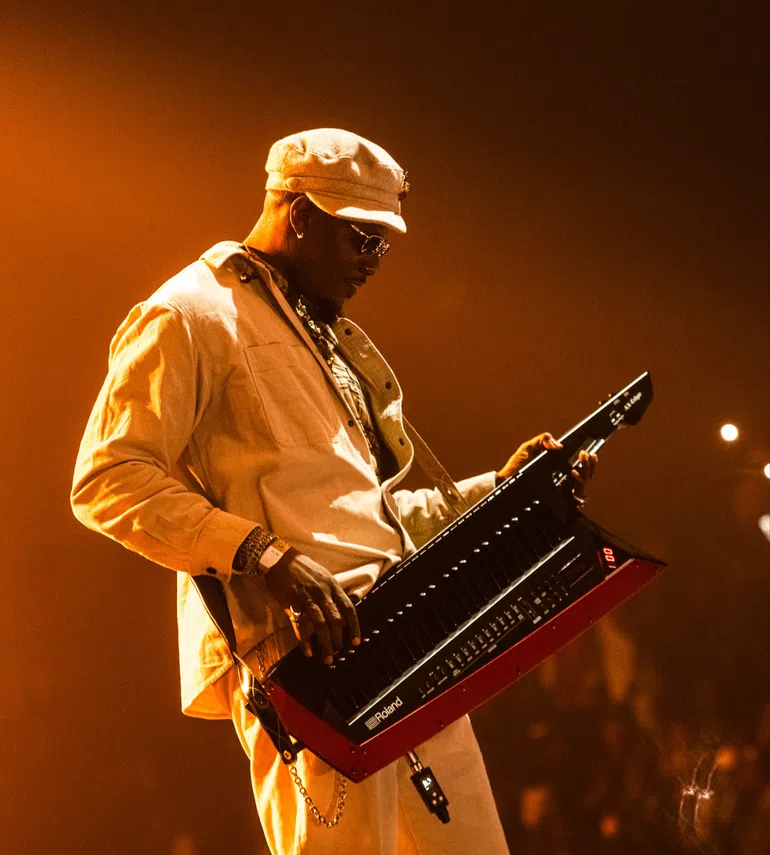The Role of Tempo in Musical Interpretation: A Case Study of Church Hymns
BY BARNABAS AKINDELE

Music has the power to stir the soul, communicate emotions and connect people to something greater than themselves.
In no other context is this more evident than in church hymns, where the beauty of melody, lyrics and harmony combines to create a deeply spiritual experience.
One crucial yet often overlooked element in this dynamic is tempo. Tempo, or the speed at which a piece of music is performed, plays a significant role in shaping how hymns are interpreted, felt and understood.
In this article, we’ll explore how tempo influences musical interpretation, using church hymns as our case study.
Tempo: More Than Just Speed
At first glance, tempo may seem like a simple technical aspect of music, defining how fast or slow a song should be sung. However, tempo does much more than dictate speed—it influences the overall atmosphere and emotional delivery of a hymn.
For example, a hymn sung at a slower tempo can evoke a sense of solemnity, reverence or deep reflection, while some other hymn performed at a faster tempo might inspire joy, praise and a more jubilant expression of faith.
Church hymns, being a crucial part of Christian worship, are designed to evoke a range of emotions, from the meditative to the celebratory. This makes the choice of tempo vital in church services, where the aim is to foster a meaningful connection between the congregation and the divine.
Tempo as a Medium for Emotional and Spiritual Connection
Hymns like “Amazing Grace” or “Abide with Me” are often performed at a slow, contemplative tempo. These slower tempos allow the worshippers to reflect on the words, creating an atmosphere of introspection and awe.
The steady, unhurried pace gives space for the congregation to meditate on the grace of God, His mercy, and the relationship between the divine and the individual.
Here, tempo becomes more than just a musical tool—it becomes a medium for spiritual communion.
On the other hand, hymns such as “Joyful, Joyful, We Adore Thee” or “When the Roll is Called Up Yonder” are often rendered at a faster tempo, igniting a sense of excitement and celebration.
In this context, the quicker pace serves as a conduit for the outpouring of joy and communal praise. A faster tempo breathes life into the lyrics, encouraging the congregation to actively participate in worship, not just through their voices but also through their emotions and physical expressions.
Tempo and Lyrics: A Symbiotic Relationship
Lyrics are the soul of any hymn, conveying theological truths, expressions of faith and spiritual reflections. The tempo of a hymn should reflect the message in its lyrics.
For instance, hymns like “It Is Well with My Soul” or “My spirit on thy care” carry lyrics that are deeply reflective, emphasizing trust in God’s providence and the comfort found in faith.
A slower tempo allows the congregation to meditate on these profound words, giving space for each lyric to resonate fully in the heart and mind of the listener.
Conversely, hymns with lyrics that express joy, triumph, or praise—such as “How Great Thou Art”, “My Faith has found a resting place” or “O Happy Day”—often benefit from a faster tempo.
In these cases, a more upbeat pace underscores the celebratory nature of the words, heightening the sense of collective praise and excitement within the congregation.
The interplay between lyrics and tempo can transform a hymn from a simple song into a powerful spiritual experience. By carefully considering the content of the lyrics, worship leaders can choose a tempo that not only fits the music but also deepens the emotional and spiritual engagement of the congregation.
The Impact of Tempo on Congregational Participation
Tempo not only shapes the emotional landscape of hymns but also influences how congregations engage with the music.
When the tempo is appropriate for the context and the hymn, congregants feel more inclined to sing along, clap, or sway to the rhythm.
For instance, during a solemn church service, a slower tempo helps maintain a spirit of reverence and unity, allowing for collective introspection.
In contrast, during festive occasions, a faster tempo encourages more vigorous participation, lifting the energy in the room and creating a shared moment of celebration.
It is important to note that tempo should be carefully chosen based on the message of the hymn and the setting of the service.
A mismatch between tempo and the hymn’s lyrical content can lead to disengagement. For example, a reflective hymn sung too quickly may seem rushed and leave no room for spiritual reflection, while a joyful hymn performed too slowly can feel stilted, dampening the intended mood of praise.
Tradition vs. Interpretation: A Balancing Act
Another aspect of tempo in hymns lies in the balance between traditional tempos and modern interpretations.
Some congregations prefer to stick to the traditional, established tempos that have been passed down through generations. These tempos carry a sense of continuity and respect for the church’s musical heritage.
However, there is also room for creative interpretation, especially in contemporary worship settings where church musicians experiment with different tempos to refresh old hymns.
The beauty of church hymns is that they can be interpreted in various ways, depending on the context and the needs of the congregation.
A hymn that is sung slowly during a funeral service might be rendered more briskly in a celebration of life, showing how flexible tempo can be as a tool of interpretation.
This versatility allows worship leaders and musicians to mold the musical experience to suit the occasion, making the hymn more impactful and relevant to those in attendance.
Conclusion
In the realm of church hymns, tempo plays a crucial role in shaping the spiritual and emotional atmosphere of worship. It is not merely a technical detail but a powerful medium of musical interpretation that can evoke feelings of reverence, joy, reflection, or celebration.
Whether slow and meditative or fast and jubilant, tempo enhances the hymns’ capacity to engage worshippers, making them not just passive listeners but active participants in the worship experience.
As we continue to appreciate the rich tradition of hymns in church services, it’s essential to recognize the thoughtful role tempo plays in delivering the message of the music.
Understanding and harnessing the power of tempo can transform hymns into deeply moving experiences, elevating the collective worship of God and strengthening the connection between heaven and earth.
–Akindele is a Church Organist, Classical Musician and Communications expert















